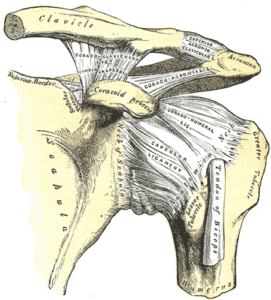Strength Training Programs: A Quick Fix for Painful Push-ups
Q: I’ve read a lot from you, Robertson, and Hartman about including push-up variations in strength training programs is really important for shoulder health. Unfortunately, whenever I do them, I have pain in my bum shoulder. Any ideas what to do?
A: Well, obviously, there are two things we need to rule out:
1. You may simply have a really irritated shoulder, which (in most cases) means that any sort of approximation or protraction movement could get it angrier, even if it is a closed-chain movement like the push-up that is normally pretty shoulder-friendly. Likewise, if you have a significant acromioclavicular joint injury, the extension range-of-motion at the bottom of a push-up could exacerbate your symptoms. So, obviously, the first step is to rule out if something is structurally wrong with your shoulder, and if so, if the push-up even belongs in your strength training program.
2. Your technique might just be atrocious. If the elbows are flared out, hips are sagging, and/or you’re in a forward head posture, simply changing your technique may very well alleviate those symptoms. In a good push-up, the elbows should be tucked to a 45-degree angle to the body, with the hips, torso, neck, and head in a straight line. The muscles of the upper back should essentially “pull” you down into the bottom position:
Once you’ve ruled out those two issues and still have some annoying issues, there is one more thing you can try: simply elevate the feet. Looking to the research, Lear and Gross found that performing push-ups with the feet elevated significantly increased activation of the serratus anterior (SA).
If we can get more SA recruitment and less pectoralis minor contribution, it keeps us out of a position of scapular anterior tilt, which mechanically decreases the subacromial space through which the rotator cuff tendons pass. In the picture below, think of the area just below the word “acromion” being smaller, and then picture what would happen to the tendons that pass through that region; they get impinged. Serratus anterior (along with lower trapezius) can help prevent that.

That said, I’ve seen quite a few folks with persistent shoulder pain with bench pressing variations (barbell and DBs) and regular push-ups who were able to do the feet-elevated versions completely pain free in their strength training programs. Obviously, begin with just body weight and see how it goes, but over time, you can start to add resistance and use the single-leg version.
Related Posts
High Performance Training without the Equipment: 5 Pushup Variations
High Performance Training without the Equipment: 6 More Pushup Variations
Sign-up Today for our FREE Newsletter and receive a deadlift technique tutorial!


